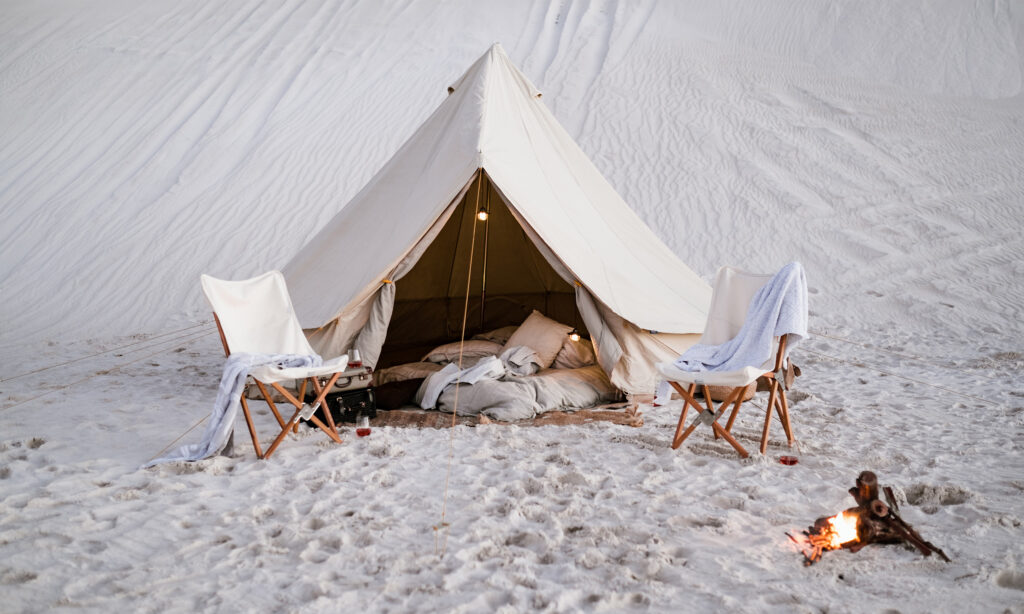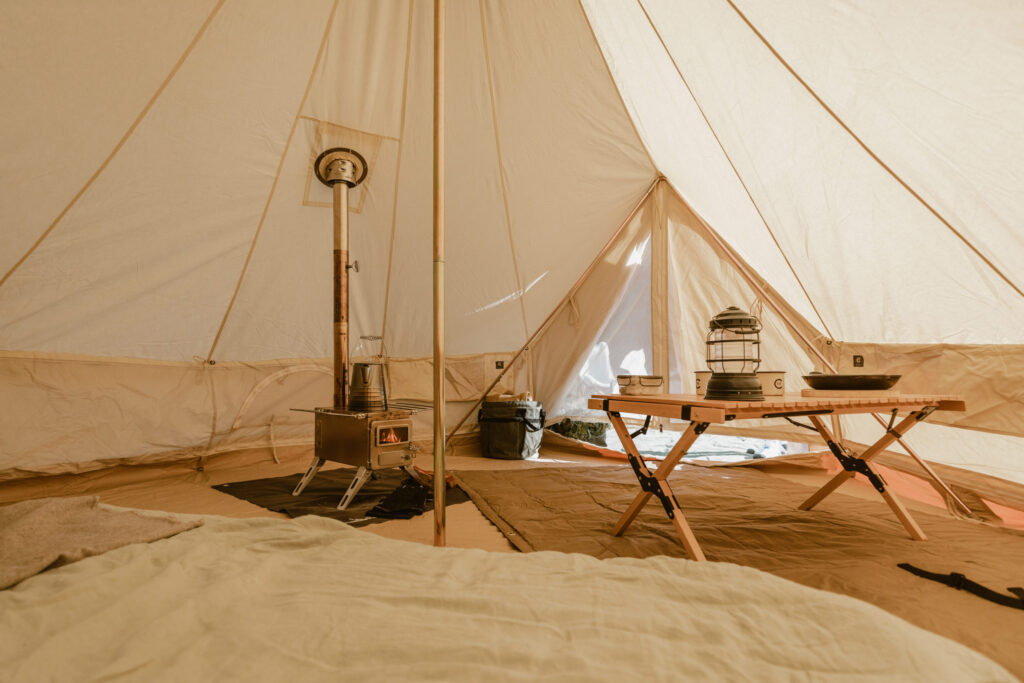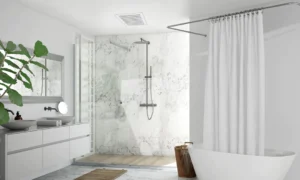Bell tent camping has become increasingly popular in recent years.
These tents are known for their ample space, durability, and versatility, making them famous for camping trips, outdoor festivals, backyard parties, and even glamping experiences.
However, with so many different types of bell tents available on the market, it can be challenging to know where to start.
Based on primary research, the tent market was estimated to be worth roughly USD$2.9 billion in 2021 and is expected to reach USD$4.7 billion by 2028. This is because more and more people seek a comfortable and enjoyable way to experience the great outdoors.
You can check out this ultimate guide to bell tents from Homecamp or consult other reliable resources online to make sure you’re getting the best one for your needs.
Below are the factors to consider when selecting a bell tent!
The Size
When selecting the right bell tent, it’s important to consider the number of people that will be sleeping inside. Bell tents come in various sizes, from compact ones that can comfortably accommodate 2-3 individuals to larger ones that can sleep up to 10 people. Choose a tent that will not only house all the occupants comfortably but will also provide space for gear storage.
A larger tent offers more room for occupants and equipment, making it an ideal choice for bigger groups or longer camping trips that require more supplies. However, keep in mind that larger tents can be heavier, bulkier, and more difficult to set up.
They may also not be suitable for certain environments, such as high-wind areas or narrow camping spaces. Therefore, always consider the tent’s intended use and the specific requirements of your camping trip when deciding on a tent’s size.
The tent’s size will affect its accommodation capacity, weight and portability, interior space, and suitability for different types of camping.
The Material
The material of the tent should be robust and durable to withstand the elements and resist wear and tear. Canvas is a popular choice for bell tents due to its strength, breathability, and sound insulation properties. It’s also a natural material, making it more environmentally friendly compared to synthetic ones.
In addition, since bell tents are typically used outdoors, they need to be water-resistant or waterproof to protect against rain, dew, and other forms of moisture. One highly recommended fabric for bell tents is cotton due to its excellent ability to adjust to different climates.
In fact, it’s the go-to fabric type for any four-season camping. To enhance its effectiveness against moisture, cotton canvas is usually treated with water as well as rot, ultraviolet, and fire retardant agent, making it not only water-resistant but also fire-resistant when exposed to high temperatures. On the other hand, synthetic materials may already possess natural water-resistant properties and may not require additional treatment.
Ultimately, consider the tent’s intended use and the specific camping trip requirements when selecting tent material. For instance, a durable and breathable material like canvas might be more suitable for long-term camping, while a lighter-weight synthetic material could be better for short trips or backpacking.
Weight and Load Distribution

Source: stylishcampingco.com.au
Weight and load distribution are crucial factors to consider when choosing a bell tent. These tents are designed to be spacious and comfortable, but they can also be heavy and challenging to transport, set up, and take down.
A heavy tent can be difficult to carry, particularly if you’re hiking or backpacking. Setting it up and taking it down alone or in adverse weather conditions can also be strenuous. Hence, it’s advisable to opt for a lightweight tent that is manageable. Synthetic materials like polyester and nylon are generally lighter than natural materials like canvas, making them a good option for those who need to keep their pack weight low.
Equally important is the load distribution of the tent. Ensure that the tent’s weight and contents are evenly distributed across the poles and stakes to avoid excessive strain on any one point. This is especially crucial in windy conditions, where uneven load distribution can increase the risk of damage or collapse. Opt for tents with sturdy poles and stakes and secure the tent properly to ensure even load distribution.
Ventilation
Proper ventilation is essential for maintaining a comfortable and healthy environment inside the tent and preventing condensation and moisture buildup. Ventilation helps regulate the tent’s internal temperature.
In warm weather, good ventilation disperses heat and cools the interior. In cold weather, it can prevent moisture buildup and reduce the risk of condensation, which can make the interior feel damp and uncomfortable.
Look for tents with windows, vents, or mesh panels that can be opened or closed as needed, depending on the weather conditions. These features promote good air quality inside the tent. When people sleep inside a tent, they exhale carbon dioxide and moisture, which can create a stuffy and uncomfortable environment.
Good ventilation circulates fresh air, helping to reduce carbon dioxide levels and promote better air quality. This is especially important for individuals with allergies or respiratory issues.
Additional Features
Beyond the material, weight, load distribution, and ventilation, it’s crucial to consider additional features that can enhance the tent’s overall functionality, comfort, and convenience during camping.
Look for tents with built-in flooring, pockets, and gear lofts to help keep your equipment organized and off the ground. Some tents may also feature built-in lighting or power outlets, which can be incredibly useful for longer trips or for charging electronic devices.
Also, pay attention to the quality of zippers and fasteners that will withstand frequent use and rough handling. The quality and type of zippers and other fasteners can significantly impact the ease of accessing and exiting the tent, particularly in the dark or during inclement weather.
Additional accessories or add-ons can also be crucial considerations. Some bell tents come with accessories like awnings or vestibules, which can expand the tent’s usable space and provide additional shelter from the elements. Other add-ons, such as rainfly or footprint covers, can help to protect the tent from damage and extend its lifespan.
Conclusion
For those seeking a luxurious camping experience in the great outdoors, bell tents are an excellent option. They offer a unique and comfortable camping experience that’s hard to replicate with traditional tents. While finding the perfect bell tent may be challenging, considering the aforementioned factors can simplify the process.





























